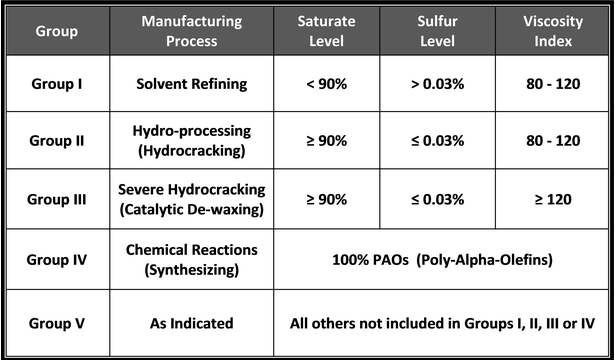Your engine oils are available as conventional, synthetic blend, or full synthetic. These categories are based on quality. But what is really the difference between them?
The Difference is in the Base Oils
The most common difference is the type of base oil used in the blending process. The American Petroleum Institute (API) classifies base oils into five major groups. These groups are based on the level of saturates, sulfur, and viscosity index.

Oil that is made from Group I/II base oils is a conventional product. Sometimes these are called mineral oils. Oil that is made from Group III/IV base oil are synthetic products.
Synthetic blends are made from a mixture of conventional and synthetic base oils. This process means there are some benefits of a synthetic product but with a lower cost. The issue with synthetic blends is there are currently no regulations in North America that state how much synthetic base oils must be used. They could be as little as 1% synthetic base oil to be called a synthetic blend. Higher quality synthetic blends will use 20 to 40% synthetic base oils but you won't be able to see that information on the label.
We recommend choosing your oil type based on your equipment usage. It doesn't always make sense to use the best product (a full synthetic) in situations with a lot of leakage, spillage or dirty environments that you have to change the oil more frequently in. In some situations it's more appropriate to use a synthetic blend or conventional oil.